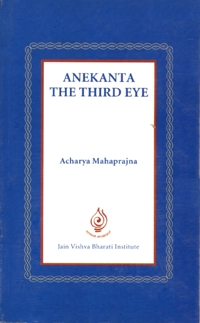
In the Jain agamas there are five kinds of knowledge explained. Among them the fourth is manahaparyavagyan. The one who has this knowledge reads other people's minds. He is able to know how the other person is thinking. In Nandi sutra this knowledge has been discussed at length. In the discussion, the writer has posed many questions and given their answers too. The question: "Can manahaparyavagyan look into the mind of a person who lived ten thousand years ago?" In the text of the reply it is said, that, yes, it can be known very clearly. Another question asked is, "Can manahaparyavagyan know the mind of a person to be born fifty thousand years hence?" Time has become one. There is no past or future everything has become the present.
It has become relative. That which we think of ten thousand years ago still exists. How? Jain philosophers have given an explanation of that. They have said: Our mind is material. We think through the medium of matter. Matter has categories, associations and an environment. For thinking we use matter. After thinking the thoughts scatter. They become free particles in air, in the cosmos. The cosmos is a treasure house, a wonder. There are a lot of things lying around there. It is good that contemporary man is not able to see that or he will be obsessed with looting it!
His fascination with other treasures may also wane. The one who sets out on a quest for the treasures in the sky will give up all other quests. Against this background where we are sitting, one does not know how many pictures of thoughts of how many beings are hanging. Lakhs and crores of them. No painter has painted these pictures. They are those that are born out of thoughts of every thinking person. These pictures cannot be read, they can only be seen.
Thinking never takes place in language but in pictures. You may know that in some cultures the script for language was pictorial. All details of thought are expressed pictorially, not through words or script. It is the work of our mind to prepare the pictures. If a man thinks of building a house, then he has a picture of a house in his head. If he thinks of a car then the picture of the car is made in his mind and if he thinks of bread then a picture of that is made in his mind. Wonder how many such pictures we make in our mind everyday. No artist in the world has ever made so many in one day. In fact all the artists of the world together cannot make so many pictures. Is there any man who is not an artist? We are all artists. But the world calls only those artists who are able to make ten-twenty-fifty paintings. All the human beings who make thousands, millions, billions of pictures in their heads, they are not called artists. Strange. This is not an imaginary situation, it is reality.
There was a man in America. A very strange quality developed in him. If he thought of any object, the object would clearly present itself in his head. In a room with high frequency, these pictures were downloaded. They were in accordance with his thoughts. In the Times, the pictorial representations of his thoughts were published. When he thought of a car, a beautiful car appeared in his head as a picture. When he thought of a beautiful skyscraper, a picture of it appeared in his head.
 Acharya Mahaprajna
Acharya Mahaprajna
